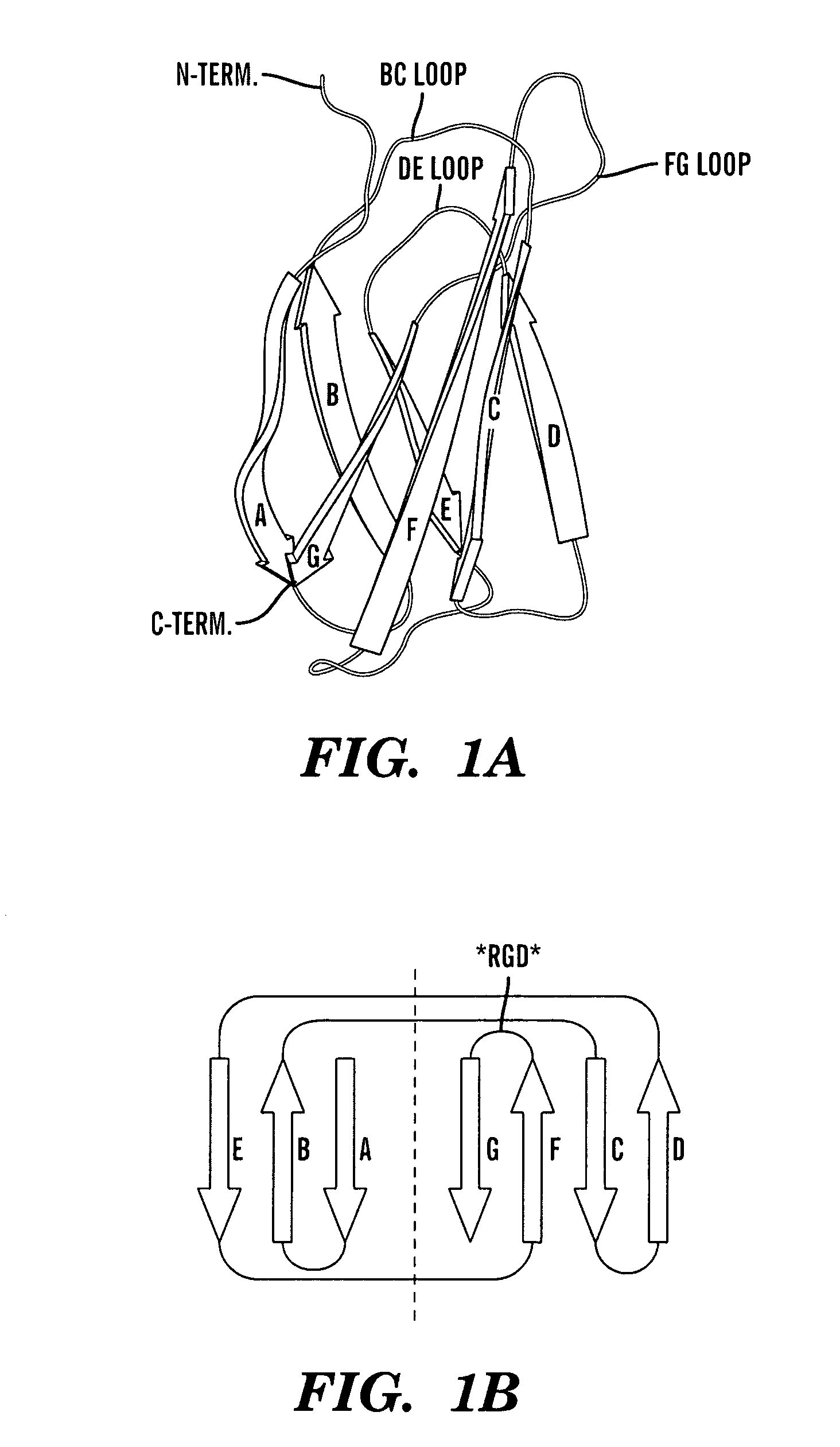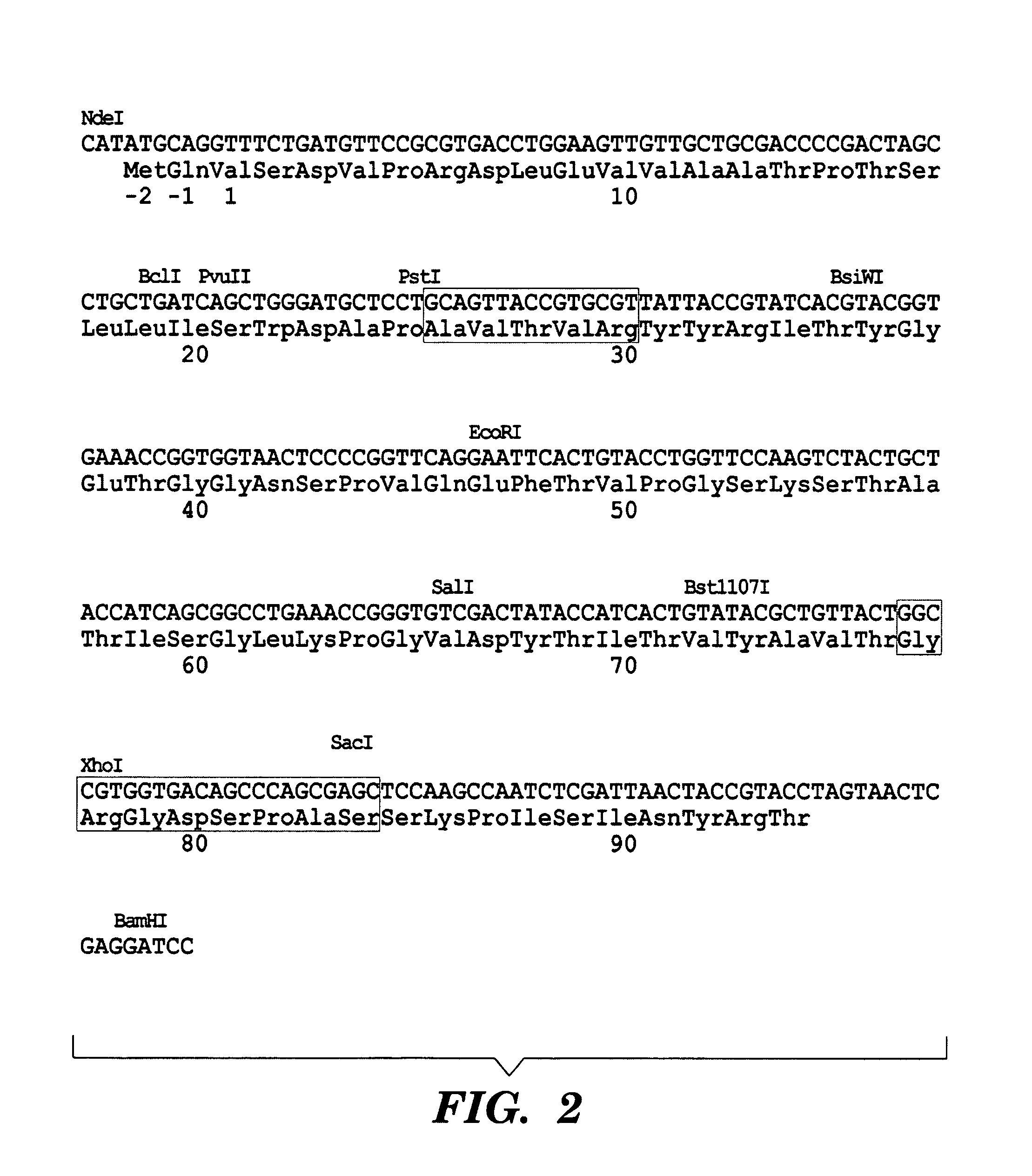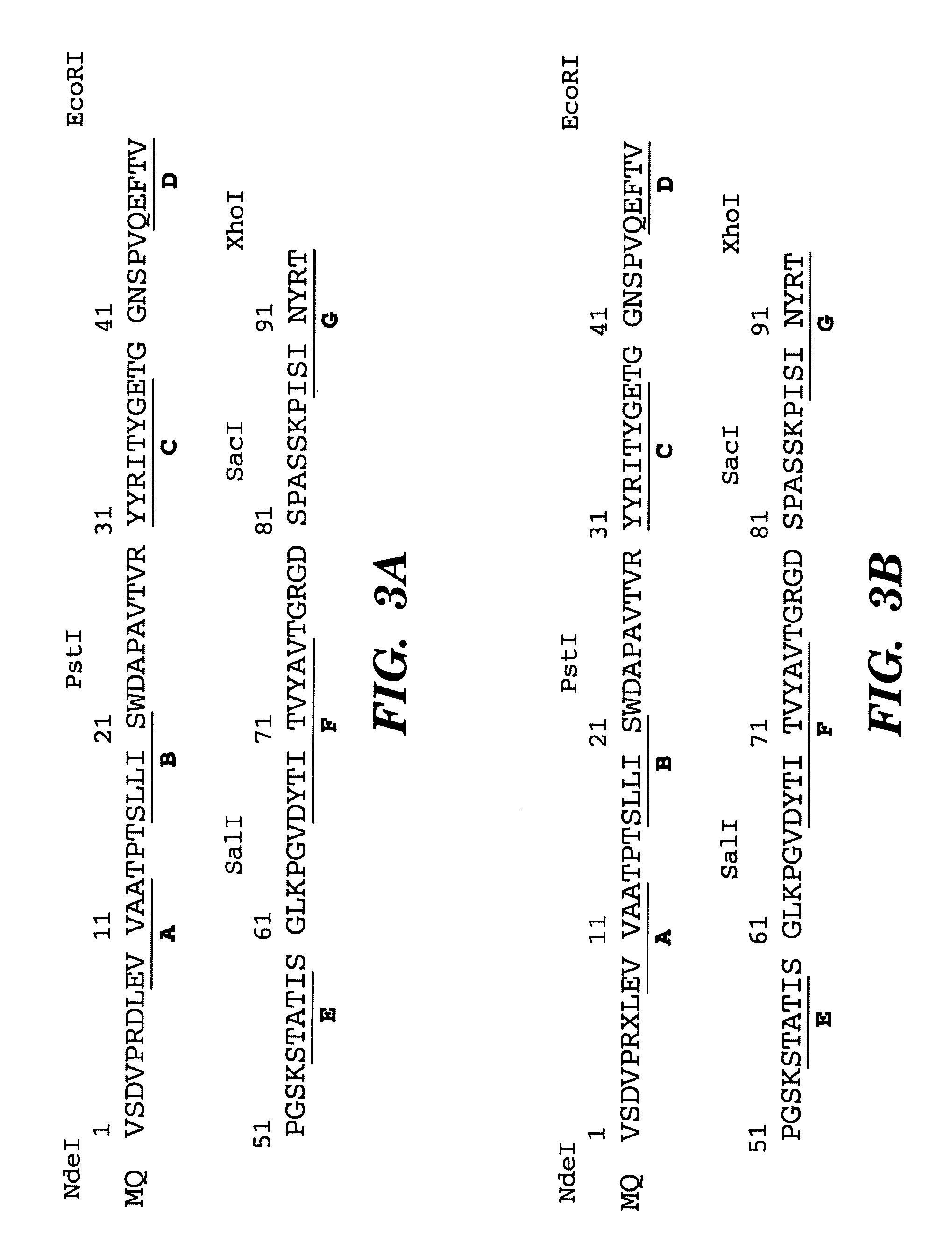Method of identifying polypeptide monobodies which bind to target proteins and use thereof
a polypeptide and target protein technology, applied in the field of polypeptide monobodies, can solve the problems of not always working in the reducing environment inside cells, no established techniques to monitor protein conformational changes in the cellular environment, and no general methods available to generate conformation-specific antibodies. the effect of measuring the ability to modulate the activity of the target protein
- Summary
- Abstract
- Description
- Claims
- Application Information
AI Technical Summary
Problems solved by technology
Method used
Image
Examples
example 1
Construction of Yeast Two-Hybrid Vectors and Monobody Library
[0139]The method of Brent and others were followed in the construction of vectors (Colas & Brent, 1998; Mendelsohn & Brent, 1994; Golemis & Serebriiskii, 1997). The synthetic gene for FNfn10 (Koide et al., 1998) was subcloned in the plasmid pYESTrp2 (Invitrogen, Calif.) so that FNfn10 was fused C-terminal to the B42 activation domain (pYT45). A map of pYT45 is shown at FIG. 9. This plasmid includes a T7 promoter sequence upstream of regions coding for (from 5′ to 3′) a V5 epitope, a nuclear localization signal, a B42 activation domain, and a combinatorial polypeptide monobody derived from FNfn10. The nucleotide (SEQ ID No: 16) and amino acid sequences (SEQ ID No: 17) for the B42-FNfn10 fusion are shown in FIG. 10.
[0140]The following plasmids encoding LexA-fusion proteins were constructed by subcloning an appropriate PCR fragment in the plasmid pEG202 (Origene): pEGERα297-595, ERα-EF (residues 297-595, the E and F domains o...
example 2
Screening of Monobody Library for Estrogen Receptor-α EF Domain Specificity in the Presence of a Ligand
[0143]The yeast strain RFY206 harboring pEGERα297-595 and a LacZ reporter plasmid, pSH18-34 (Origene), was mated with EGY48 containing the monobody library (Finley & Brent, 1994). Diploid cells that contain an ERα-binding monobody were selected using the LEU+ phenotype on minimal dropout media (Gal Raf-leu-his-ura-trp). (Although ERα itself has a weak transcriptional activation function in yeast (Chen et al., 1997), these constructs did not activate the LEU2 reporter gene to an extent that confers LEU+ phenotype in the yeast EGY48.)
[0144]A series of library screening was performed in the presence of different ERα ligands (E2, estriol, and OHT). The ligand concentration used was 1 μM. Colonies grown after three days of incubation were further tested for galactose-dependence of the LEU+ phenotype and β-galactosidase activity. The plasmids coding for a monobody were recovered from yea...
example 3
Discrimination of Estrogen Receptor-α Conformations in Living Cells Using Conformation-Specific Monobodies
[0152]The binding specificity of the monobodies toward different ERα-EF / ligand complexes was examined using quantitative β-galactosidase assays. It has been shown that the β-galactosidase activity correlates well with the interaction affinity between the bait and prey of the yeast two-hybrid system (Estojak et al., 1995), allowing an in vivo discrimination of interaction affinity. To minimize the effect of different ligands on the expression level and degradation of the LexA-ER fusion protein, β-galactosidase activity was determined after a short incubation period (6 hours) following the addition of a ligand and the initiation of monobody production. It was confirmed that yeast samples prepared in the presence and absence of ligands contained similar levels of ERα-EF protein (FIG. 14H). In addition, it was found that these ligands have little effect on the expression level of mo...
PUM
| Property | Measurement | Unit |
|---|---|---|
| volume | aaaaa | aaaaa |
| pH | aaaaa | aaaaa |
| β | aaaaa | aaaaa |
Abstract
Description
Claims
Application Information
 Login to View More
Login to View More - R&D
- Intellectual Property
- Life Sciences
- Materials
- Tech Scout
- Unparalleled Data Quality
- Higher Quality Content
- 60% Fewer Hallucinations
Browse by: Latest US Patents, China's latest patents, Technical Efficacy Thesaurus, Application Domain, Technology Topic, Popular Technical Reports.
© 2025 PatSnap. All rights reserved.Legal|Privacy policy|Modern Slavery Act Transparency Statement|Sitemap|About US| Contact US: help@patsnap.com



